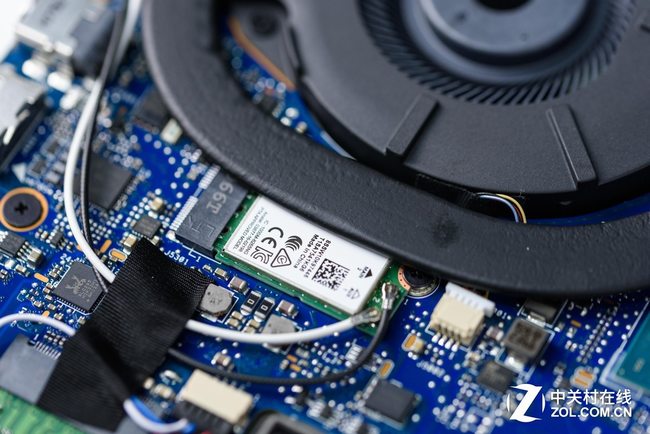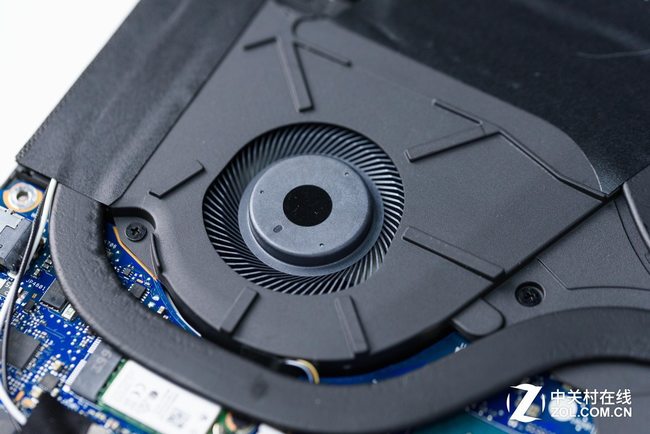At the Taipei computer show, NVIDIA Max-Q mobile GPU technology shines brilliantly, attracting the attention of most of the industry and game enthusiasts. Max-Q technology can make the game laptop ultra-thin, long battery life and high performance. It’s giving up the stereotype, to meet the future fashion. In a crowd of Max-Q GPU gaming laptop, ASUS Zephyrus GX501VIK became the star of the queen, with 18 millimeters of thickness to shine the whole audience.
Today, we will take apart the Asus ROG Zephyrus GX501VI to explore its internal structure.
For the freshest produce, find us on Facebook for the latest teardown news.
1. Removing the bottom cover
Remove all screws from the bottom cover. Then gently remove the plate cover.
Under the bottom cover, you will find a couple of more screws. Remove all of these visible screws.
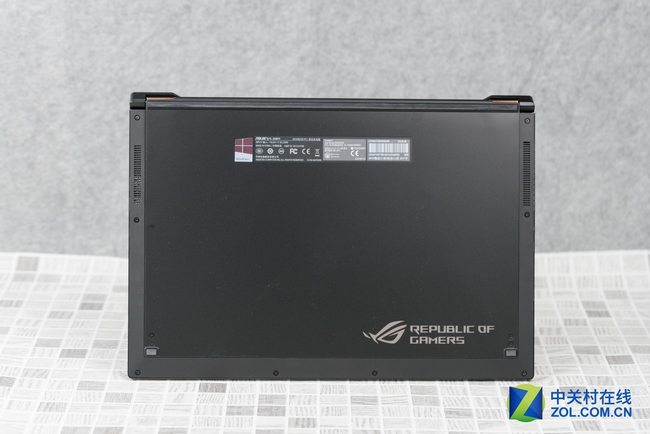
Pry up and remove the palm rest/keyboard assembly.
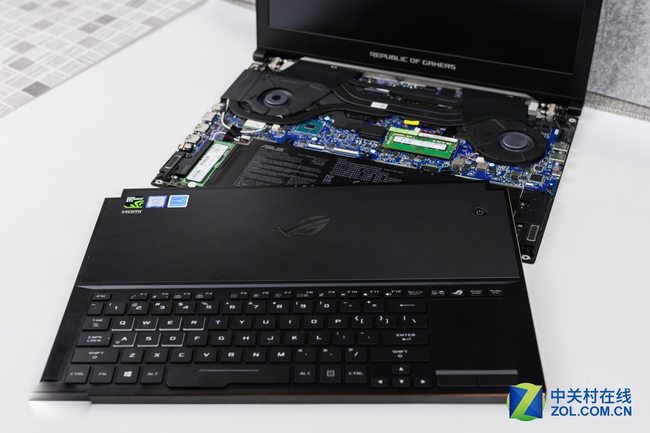
After removing the palm rest, we can see that GX501VI’s ultra-thin double fans and heat sink take up a lot of space. The five heat pipes are different in length and are covered with the black coating. The arrangement is quite scientific.
The center of the lower part of the cooling fan module is Intel Dual Band 8265 wireless network card, motherboard PCH chip and RAM slot from left to right. It is worth noting that, GX501V has two dual-channel DDR4 memory, but there is only one slot on the front of the motherboard, and the other should be soldered to the back of the motherboard.
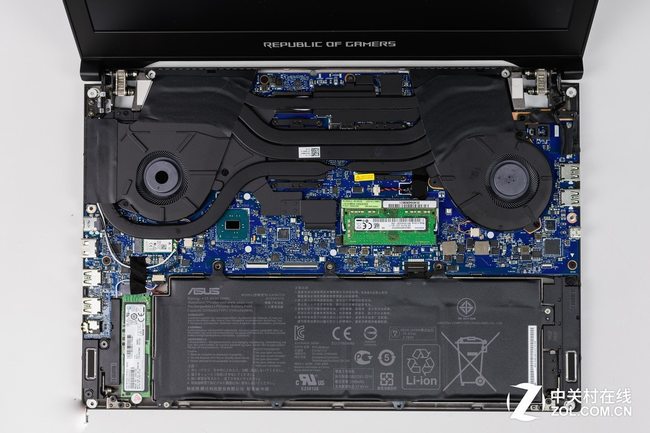
2. SSD Upgrade option
The laptop sports only one M.2 SSD slot, which in our case is Samsung SM961 PCIe NVMe SSD with 1TB capacity.
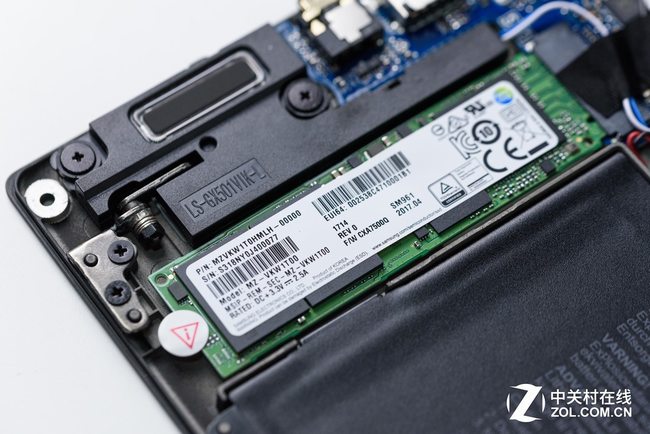
3. RAM Upgrade option
The laptop comes with an 8GB DDR4-2400 soldered on the motherboard and another RAM slot available for an upgrade.
Here’s Samsung 8GB PC4-2400T RAM.
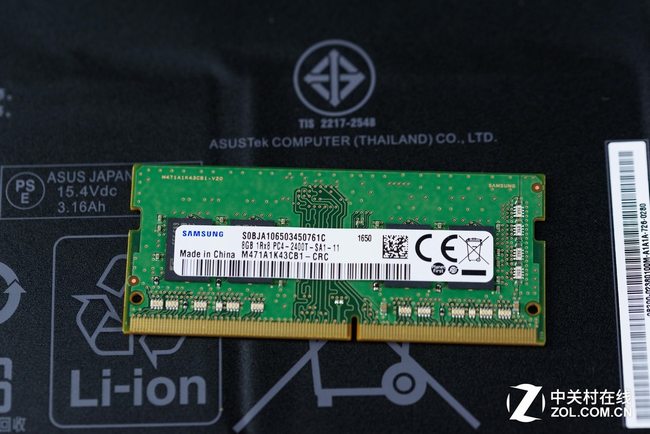
The lower corners of the fuselage symmetrically arranged the 2W audio unit.
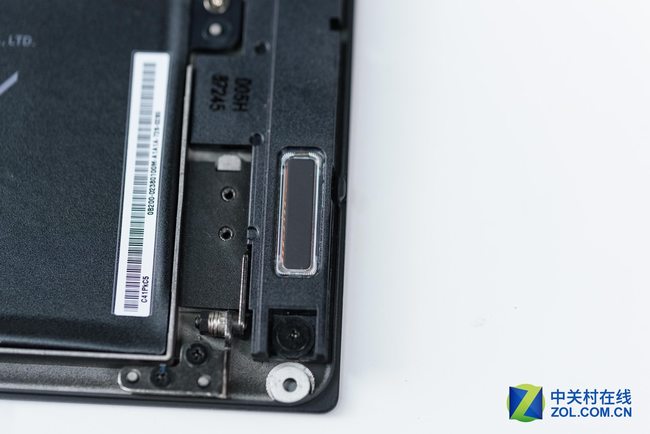
The lower left is 1TB Samsung NVME SSD, the majority of the right volume is occupied by the 50Wh battery.
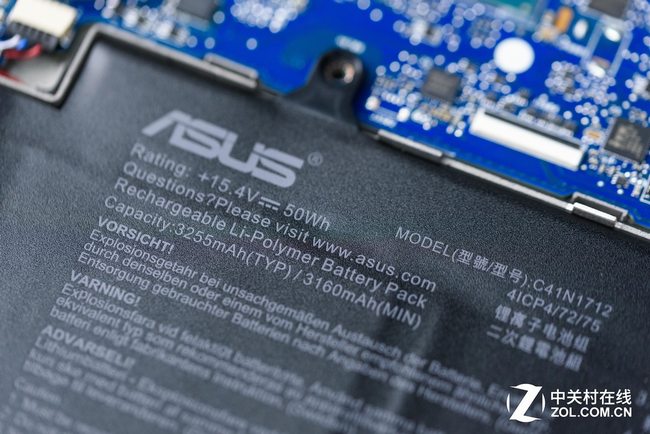
4. Wi-Fi
The Intel Dual Band 8265 wireless card is covering by the heat sink.
